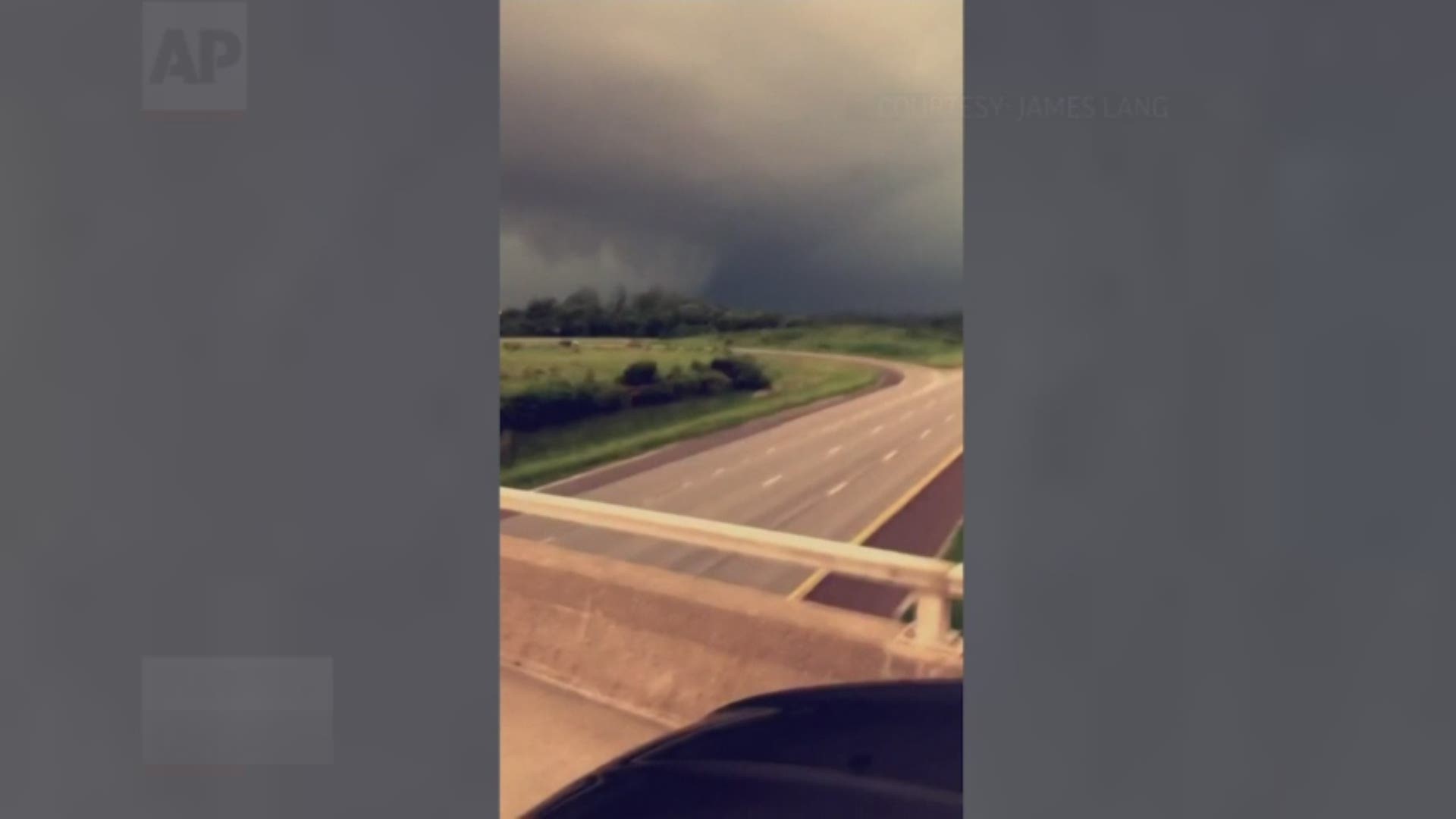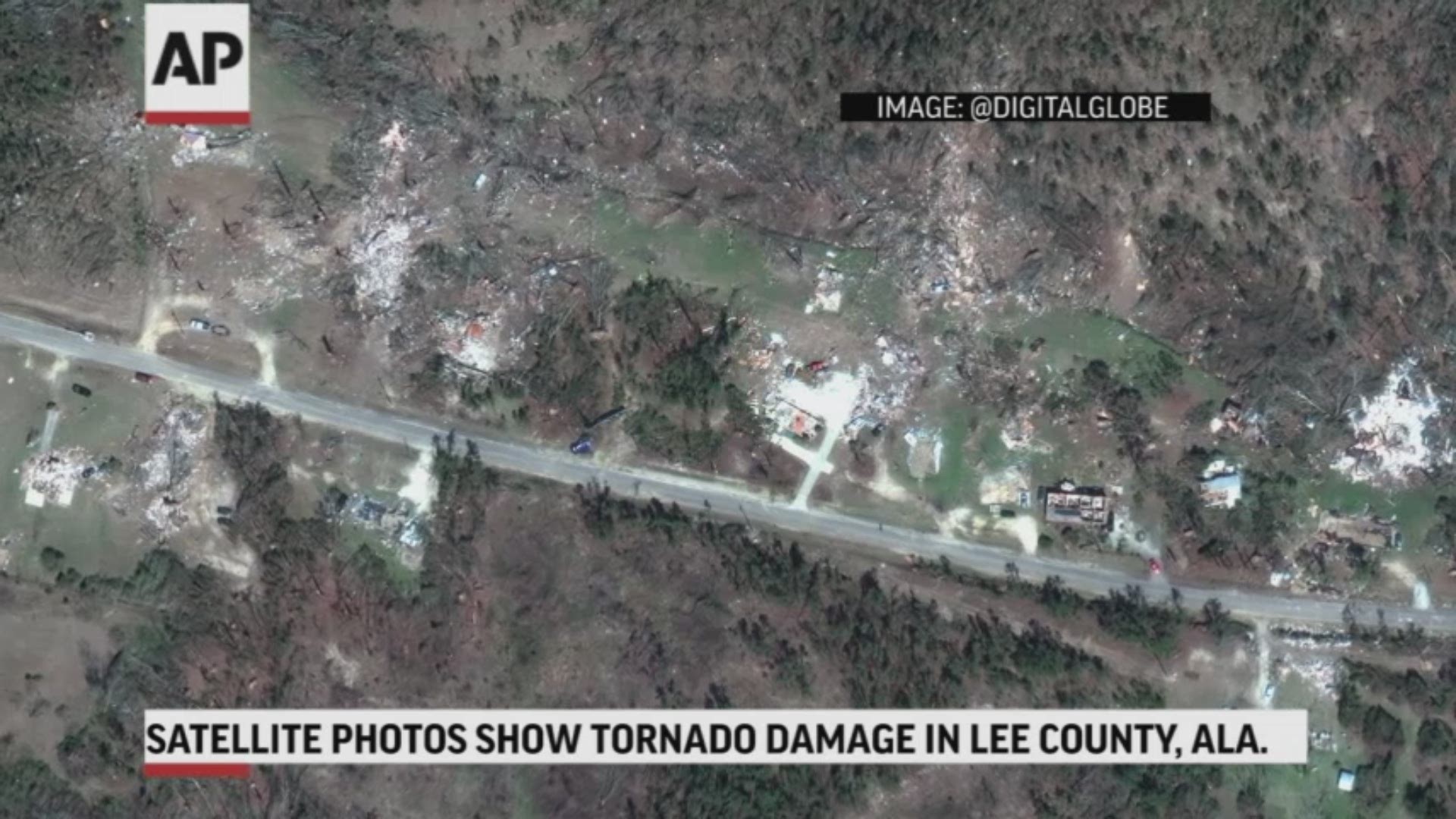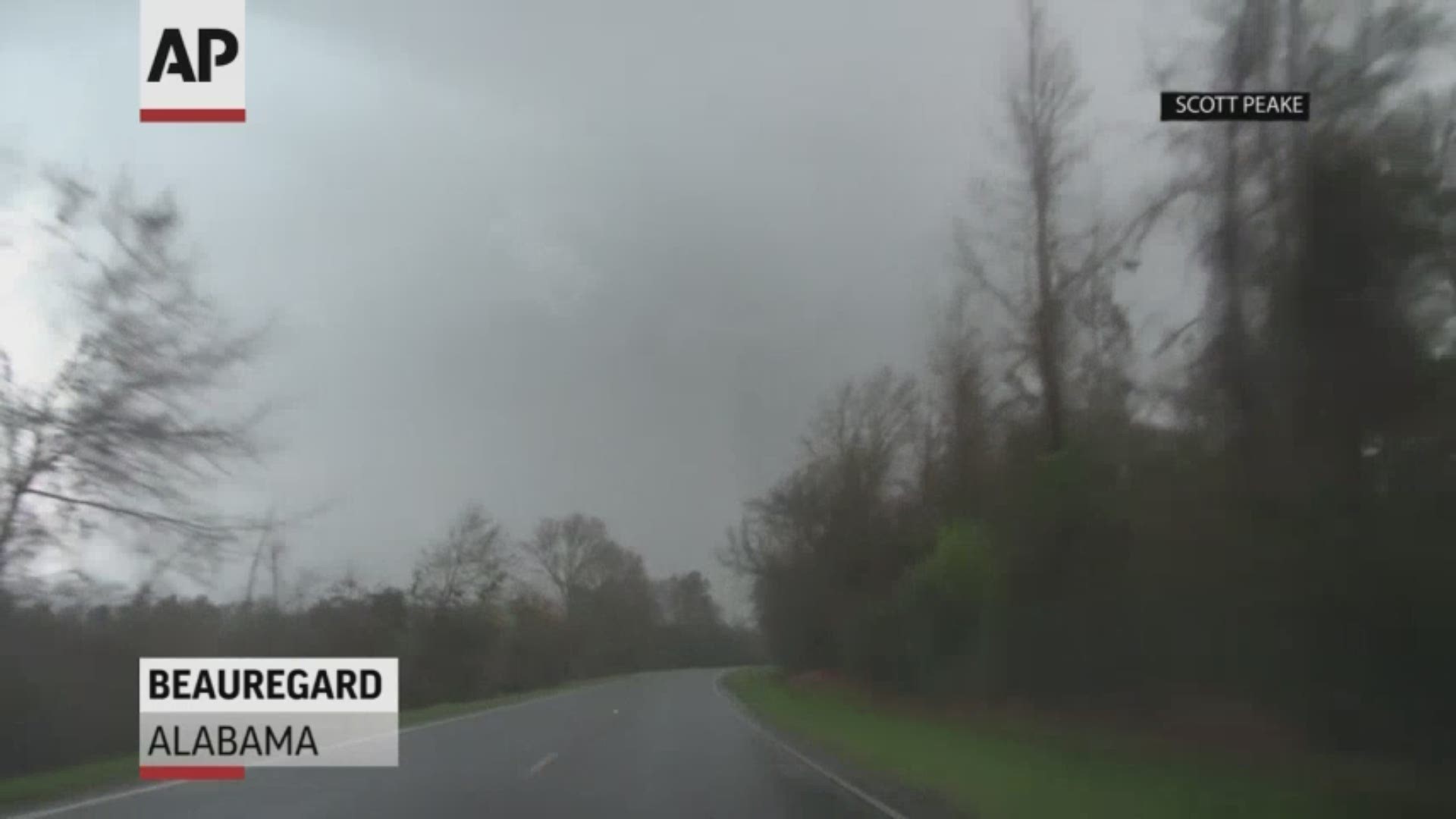INDIANAPOLIS — After several quiet years, the United States was threatening to break a major record for tornado activity this week as a volatile mix of warm, moist air from the Southeast and persistent cold from the Rockies clashed and stalled over the Midwest.
On Tuesday, a vicious storm tore through the Kansas City area, spawning tornadoes that downed trees and power lines, damaged homes and injured at least a dozen people in the latest barrage of severe weather that saw tornado warnings as far east as New York City.
The storms Tuesday were the 12th straight day that at least eight tornadoes were reported to the National Weather Service. If the service confirms that they were tornadoes, it would break the U.S. record for most consecutive days with at least eight tornadoes in each of those days.
The previous record was an 11-day stretch of at least eight tornadoes per day that ended on June 7, 1980.
"We're getting big counts on a lot of these days and that is certainly unusual," said Patrick Marsh, warning coordination meteorologist for the federal Storm Prediction Center.
A large and dangerous tornado touched down on the western edge of Kansas City, Kansas, late Tuesday, the National Weather Service office reported. At least a dozen people were admitted to the hospital in Lawrence, 40 miles west of downtown Kansas City, Missouri, and home to the University of Kansas, hospital spokesman Janice Early said. Damage also was reported in the towns of Linwood, Bonner Springs and Pleasant Grove in Kansas.
But the Kansas City metropolitan area of about 2.1 million people appeared to have been spared the direct hit that was feared earlier in the evening when the weather service announced a tornado emergency.
The U.S. has experienced a lull in the number of tornadoes since 2012, with tornado counts tracking at or below average each year and meteorologists still working to figure out why.
"A lot of people are trying to answer that, but there's no definitive answer," Marsh said.
The recent surge in tornado activity over the past two weeks was driven by high pressure over the Southeast and an unusually cold trough over the Rockies that forced warm, moist air into the central U.S., sparking repeated severe thunderstorms and periodic tornadoes.
Scientists also say climate change is responsible for more intense and more frequent extreme weather such as storms, droughts, floods and fires, but without extensive study they cannot directly link a single weather event to the changing climate.


"Neither one of these large systems —the high over the Southeast or the trough over the Rockies— are showing signs of moving," Marsh said. "It's a little unusual for them to be so entrenched this late in the season."
Those conditions are ripe for the kind of tornadoes that have swept across the Midwest in the last two weeks, said Cathy Zapotocny, a meteorologist for the National Weather Service in Valley, Nebraska. Zapotocny said the unstable atmosphere helped fuel many of the severe winter storms and subsequent flooding that ravaged Nebraska, Iowa and Missouri earlier this year.
"We've been stuck in this pattern since February," she said.
Zapotocny said the number of tornadoes this year was "basically normal" until the surge this week. May is typically the month with the highest incidence of tornadoes, usually in the Plains and Midwestern states collectively known as Tornado Alley, where most of this year's twisters have hit.
The National Weather Service has received 934 tornado reports so far this year, up from the yearly average of 743 observed tornadoes. More than 500 of those reports came in the last 30 days. The actual number is likely lower, however, because some of the reports probably come from different witnesses who spot the same twister.
Most of the confirmed tornadoes were rated as less-intense EF0, EF1 and EF2s on the Enhanced Fujita Scale. But 23 were classified as EF3 tornadoes, with wind speeds of 136-165 mph. The strongest confirmed tornado this year was the EF4 tornado that killed 23 people in Alabama in March.
So far this year, 38 people have died in 10 tornadoes in the United States, including a combined seven within the last week in Iowa, Missouri, Oklahoma and Ohio.
The relative quiet in recent years followed the massive tornado that killed 161 people and injured more than 1,100 in Joplin, Missouri, in 2011. The EF5 storm packed winds in excess of 200 mph and was on the ground for more than 22 miles.
Monday's outbreak was unusual because it occurred over a particularly wide geographic area. Eight states were affected by two regional outbreaks, in the high Plains and the Ohio River Valley.
Some parts of the country may see relief in the next few days. Missouri remained under a severe weather threat Tuesday night, barely a week after a massive tornado ripped through the state capital of Jefferson City, but the high pressure system that raised the risk is set to move out of the state by Thursday.
"The main threat is going to be tonight and tomorrow," said Cory Rothstein, a meteorologist for the National Weather Service in Springfield, Missouri.



